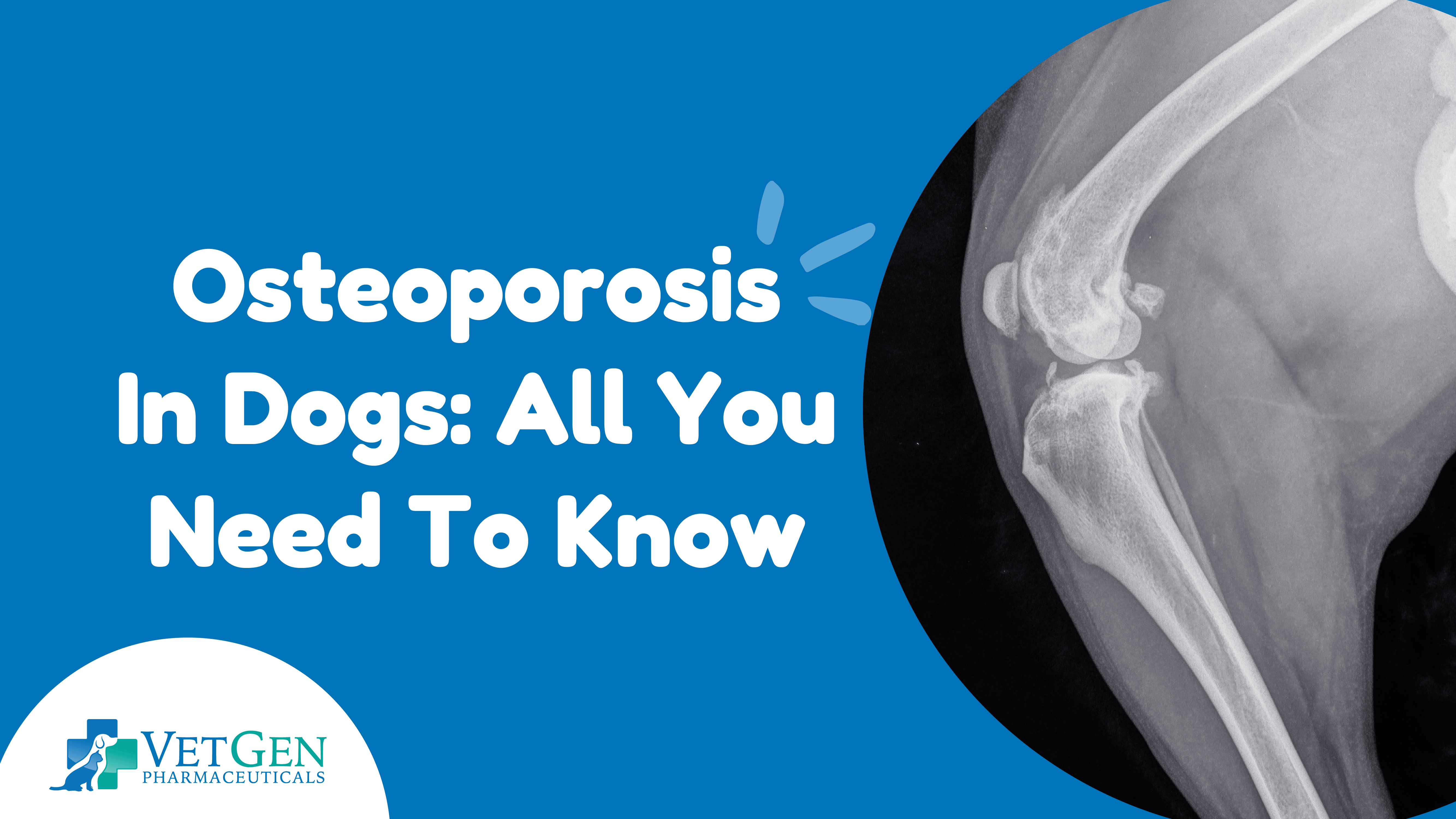Table of Contents
Osteoporosis is not just a disease millions of people worldwide suffer from, but also something dogs can get. Osteoporosis is a serious disorder in canines, so it is important that you are able to recognize the symptoms and know what courses of action you should take on how to treat your pet.
Read on to learn what causes this condition, how to spot the early signs, and what you can do to treat and prevent it.
Overview of Osteoporosis in Dogs
Osteoporosis makes your dog’s bones weak and brittle. They develop low bone density that puts them at high risk for fractures caused from even the slightest bump or fall. What is even more terrible about this condition is that there’s no pre or tell-tale signs of it for early stage detection. Osteoporosis often shows no symptoms until a fracture or break happens.
Difference Between Osteoporosis and Osteoarthritis
Both osteoporosis and osteoarthritis diminish the mobility of your pet. However, they are grouped under a different set of symptoms. In osteoporosis, it will affect the bone strength of your dog. In contrast, osteoarthritis is a condition that can cause his bones and cartilage to become weak. This will make the joints of your dog swell up and leave them in greater pain. You must understand the difference between the two to make sure you get the right treatment for it.
Causes and Risk Factors of Osteoporosis
There are a lot of risk factors that can cause osteoporosis in dogs. Do you know how these factors are affecting your dog’s health? Read on to know about it.
Genetic Factors
Based on the information gathered, genetics is one of the leading roots of osteoporosis in dogs. It is some breeds’ fate to be susceptible to bone weakness because their genes contain it. Osteoporosis affects the breeds:
- Doberman Pinschers
- Boxer Dogs
- German Shepherd Dogs
- Golden Retrievers
- Great Danes
If your household comprises a dog from this line of breed then they are prone to develop osteoporosis.
Hormonal Imbalances
If for any reason the hormonal balance of a dog is disturbed, it can become more vulnerable to osteoporosis. It is clear that bones in senior dogs get affected by density and strength because of poor hormonal production including testosterone and estrogen. Taking your pet for regular checkups with the vet will be easier to diagnose any hormonal imbalance and treat the same.
Lack of Exercise
Lack of adequate exercise including weight training, can cause deterioration of osteoporosis in dogs. If they do not engage in some form of activity that puts stress on the bones they can become weak and less dense. Dogs need to play, run, and even jump to keep their bones strong. Taking them for a walk for at least thirty minutes a day helps in development of the bones.
Aging Process
Another determinant of the cause of osteoporosis is age. Fairly speaking, an old dog is not as strong or as active as a young dog. Cognitive aging conditions in older dogs require close attention on the dog’s diet, activity, and general wellness to counter the impact on the dog’s bones.
Common Symptoms of Osteoporosis
Some of the common symptoms of osteoporosis include:
- Pain and Discomfort
- Mobility Issues
- Fractures and Bone Deformities
- Changes in Behavior
- Lameness or Limping
- Difficulty Eating or Chewing
- Postural Changes
Diagnostic Methods
In dogs, the first symptoms of osteoporosis are still subtle, but when going through your usual check-ups, there are ways to identify it. X ray enables you to see deep into their bones in order to have a feel of their bone quality and health. If those are not well understood, additional tests such as bone density tests can help determine the actual density of your dog’s bones. Also, a blood count test to determine other disorders which may cause osteoporosis may be helpful. An extensive veterinarian examination will collect all the symptoms and come up with a holistic view of your dog’s bone health.
Treatment Options for Osteoporosis in Dogs
An initial approach to administering osteoporosis in dogs of any breed includes the use of medications. With the help of medicines, you can soothe some of the symptoms and reduce the impact of the disease.
Pain relief medications, such as nonsteroidal anti-inflammatory drugs (NSAIDs) are commonly prescribed to help manage the discomfort and pain associated with osteoporosis. These medications reduce pain and allow your dog to move more comfortably.
Here are some treatment options that you can try:
- Bone density enhancers
- Proper nutrition
- Supplements
- A well-balanced diet
- Physical therapy
- Regular exercise
- Maintaining a healthy weight
Surgical Interventions
In advanced stages of the disease, dogs may require surgery if their bones have fractured. This may include fixing a broken bone or correcting mal alignment. A veterinarian orthopedic surgery specialist would be more helpful in giving more details regarding the procedure to take in identifying the real treatment process for the dog.
Know more about The Role Of Glucosamine In Post-surgery Recovery For Dogs here at VetGen Pharmaceuticals.
Prevention Strategies
Calcium is very important in the development of bone mass and vitamin D plays a role in the absorption of calcium. A dog’s nutritional needs should be met completely with a balanced diet. Consequently, regular exercise that would not exert a lot of pressure on the joints like walking, swimming, or controlled play can help relieve the pain. Active dogs who consistently exercise are less likely to experience bone loss, and regular physical activity can help prevent osteoporosis.
Conclusion
Osteoporosis in dogs is a rather severe disease which can produce a dramatic change in your pet’s quality of life. Although there might be situations when the emergence of osteoporosis becomes unavoidable, it is possible to prevent the disease. There are certain ways by which you can alter the diet to cater the needs of the bones and joints and incorporate exercise to improve the movement of your dog.
To minimize the risk of osteoporosis you can avoid factors that are likely to cause it while observing a proper diet. In regard to the symptoms of this disease, you should pay attention to even the slightest deviations in your dog’s behavior in order to diagnose the problem at an early stage. This will help your dog begin the treatment as soon as possible and minimize his suffering.








